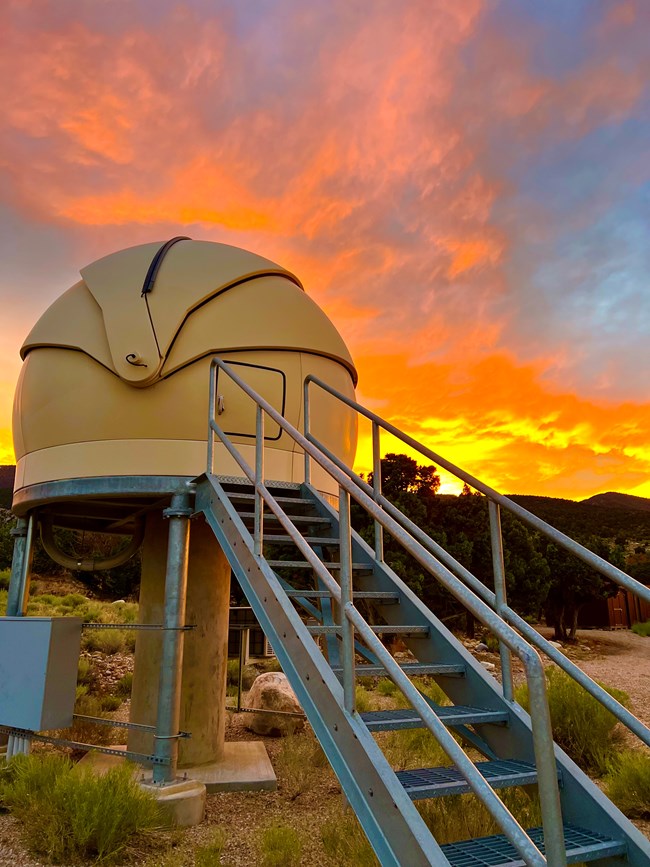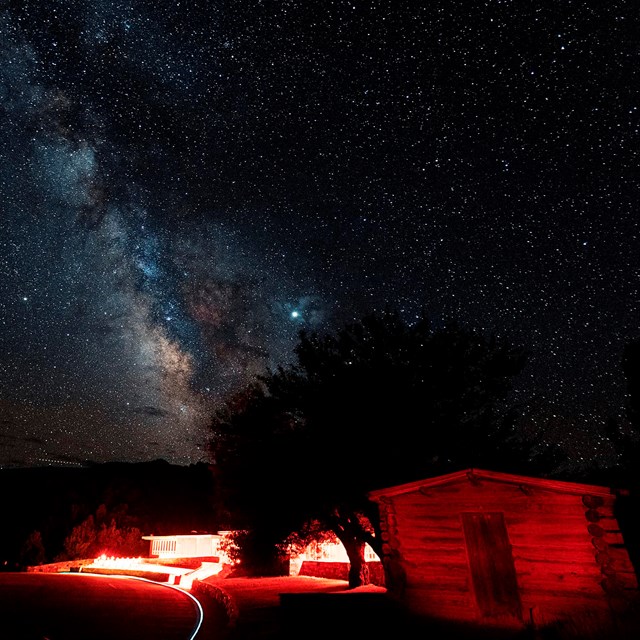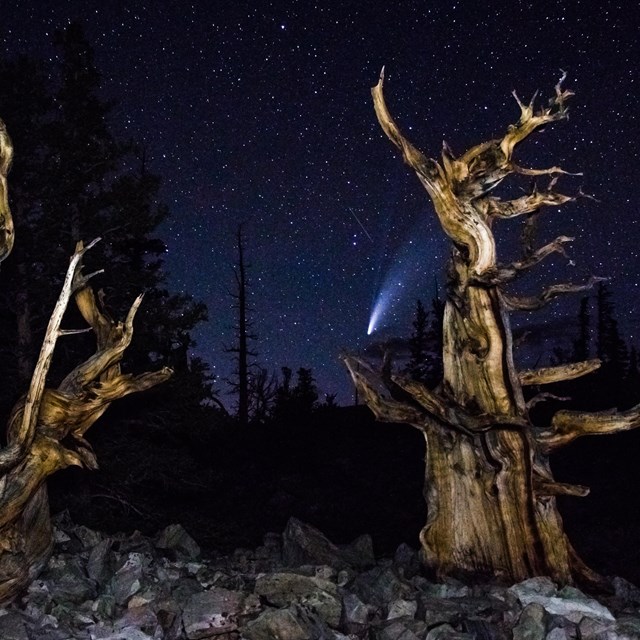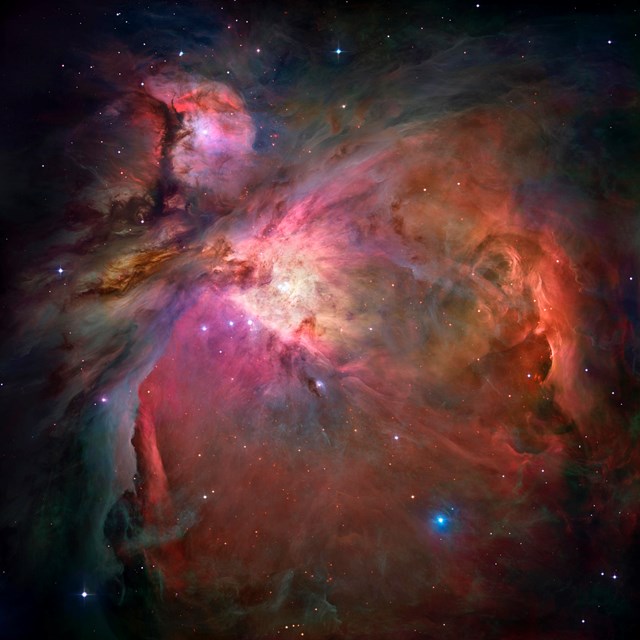See the Milky Way!Visit the Annual Astronomy Festival
D. Highsmith As anyone that has attended an astronomy program or camped overnight at Great Basin National Park can tell you - the skies at night are dark - in fact, they are some of the darkest skies in United States. Those dark skies present a special location for an astronomical observatory. In addition to the dark skies, Great Basin's night skies are extremely stable and transparent, two equally important factors for astronomical viewing. The Great Basin Observatory (GBO) is the first and only research grade observatory ever built in a U.S. National Park. Set at an elevation of 6,825 feet, with no significant man-made light for 70 miles in all directions, the observatory is a state-of-the-art, remotely operated, optical astronomical telescope. The GBO enables researchers to explore fundamental questions about our universe. Its location in Great Basin National Park underscores the need to preserve night skies as a park resource. Quick Facts about the Observatory:
A Pristine Night SkyPerhaps the most common question surrounding the GBO is why is it here? Why did Great Basin National Park earn the distinction of the only national park with the ability to perform original, astronomical research?
ToursThe Great Basin Observatory is located in an area of the park that is closed to the public. However, tours are provided annually during the Great Basin Astronomy Festival at no cost but do require a reservtion. These are limited to small groups due to the size of the observatory, the restricted area surrounding it, and ranger availability.
|
Last updated: May 11, 2024



